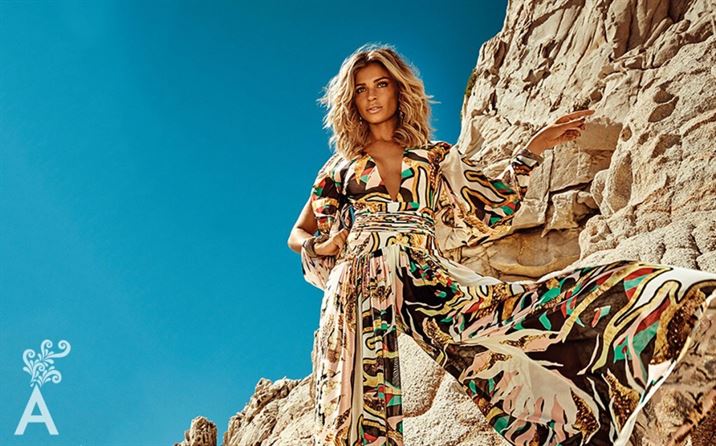A comprehensive discussion of attire requires that we transport ourselves back to the beginnings of humanity where protection from the rigors of the climate was what really mattered. The art of sewing began by joining pieces of skins that were softened by rudimentarily tanning. Early humans used them to cover their nudity and avoid the inclement weather. The prehistoric inhabitants of the Island of Crete were extraordinarily capable in the art of sewing, more so than other communities of antiquity.
Over the centuries, the act of sewing was perfected through the use of buttons, buckles and pins made of bones and thorns.
In warm places, such as in the regions surrounding the Mediterranean Sea, woven plant fibers were used to make loose clothing that insulated the person from the sun.
[two_first] The need to look appealing is innate in humans as is chronicled by the early inhabitants of this peninsula. The women adorned their hair with pearls, small shells, and white feathers that gave the impression of wigs when seen from the ships on the surrounding the seas. Skirts of maguey fibers or palms were worn and twine was used to thread pieces of reeds. Some men wore white snail necklaces that looked like pearls and bits of mother-of-pearl shell. The men with the highest hierarchy wore layers of otter skins.[/two_first][two_second]

[/two_second]
From that period of time until the 18th Century, the evolution of dress was slow. The fabrics used were velvets, brocades and others and the dresses were extremely heavy, complicated and uncomfortable; not to mention the torment caused by the corset.
[two_first]
[/two_first][two_second] The 19th Century provided no major variants. It wasn’t until the golden years at the beginning of the 20th Century when real innovations in dress began. The designers turned their interest to nature, colors, and premium materials from textile development that helped to make their creations feel soft, like shifting sands, falling leaves and constant water flowing over idealized female bodies.
[/two_second]
During the Romantic Era, windmills with silvery blades greeted ships that arrived at the port of La Paz. Residents eagerly awaited the items on board. Dressmakers knew they contained all kinds of European fabrics, rhinestones, lace and everything else necessary to carry out their work. New generations of designers continued to look for the latest trends and fused dreams that crystallized into realities.
A dress is not trivial matter. It allows us to observe the social and economic fabric.

Today, our state of Baja California Sur is a place full of natural beauties that are a source of inspiration for designers and photographers who choose locations on the peninsula to model their creations and conduct photo shoots for advertising. Climate and places like Loreto create the magic in any season.
[dropcap background=”yes” color=”#6b76c9″ size=”18px”]From the rugged beauty of the desert of Baja California Sur, a new dress arrived in 1951, inspired by the delicate cactus flower, the pitahaya. Due to her love for La Paz, Susana Aviles Hirales created the dress that represents the city.
The dress itself consists of a red satin skirt on which is drawn an arm of pitahayo with three flowers and fruits. The contours are embroidered with sequins, beads and canutillos creating a beautiful effect. The broad neckline of the white blouse features a border of the pink petals of the pitahaya flower that wrap around the shoulders.
The national colors of green, white and red dominate the dress, set off by a rebozo scarf of white silk. Whoever wears the dress complements the outfit with a large white tulle bow that symbolizes sea foam. The bow is also embroidered with black beads that are imaginary seeds of the fruit that is a symbol of life in the time of the Mejibó.
Mejibó, of Guaycura origin, means the best time of year and good weather, from May to September, when the rainy season provides clean water, flowers and fruit.
[/dropcap]






